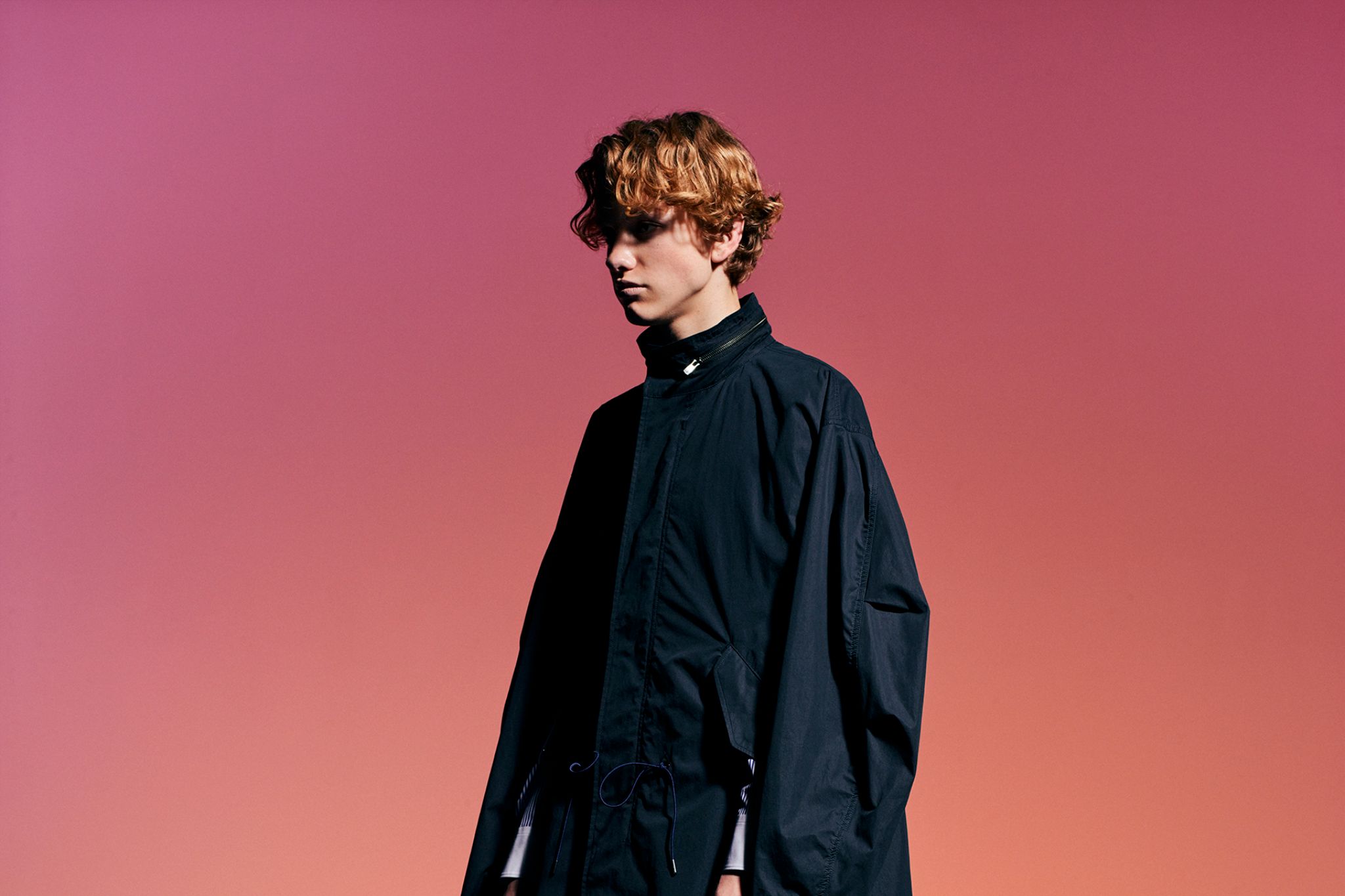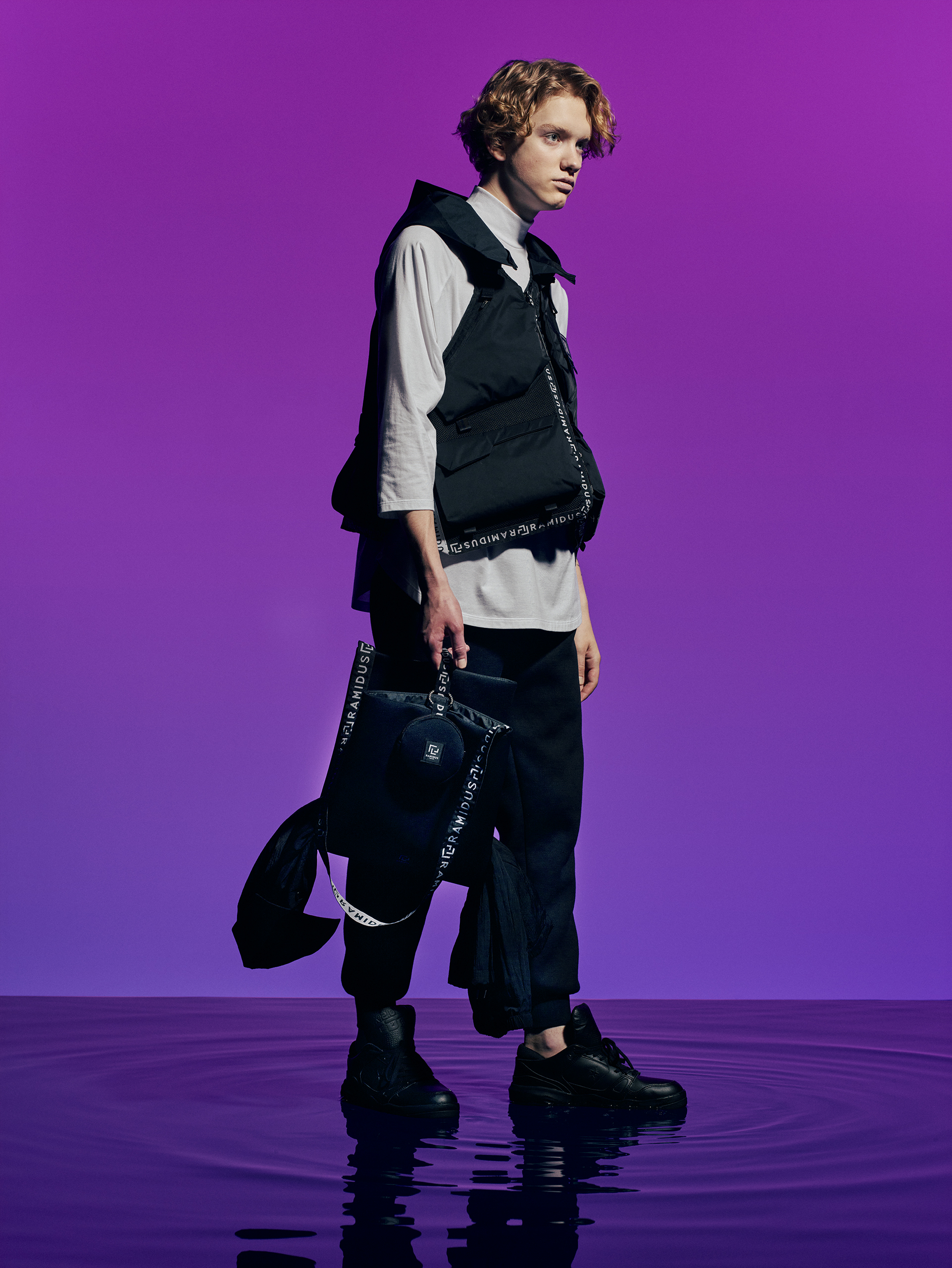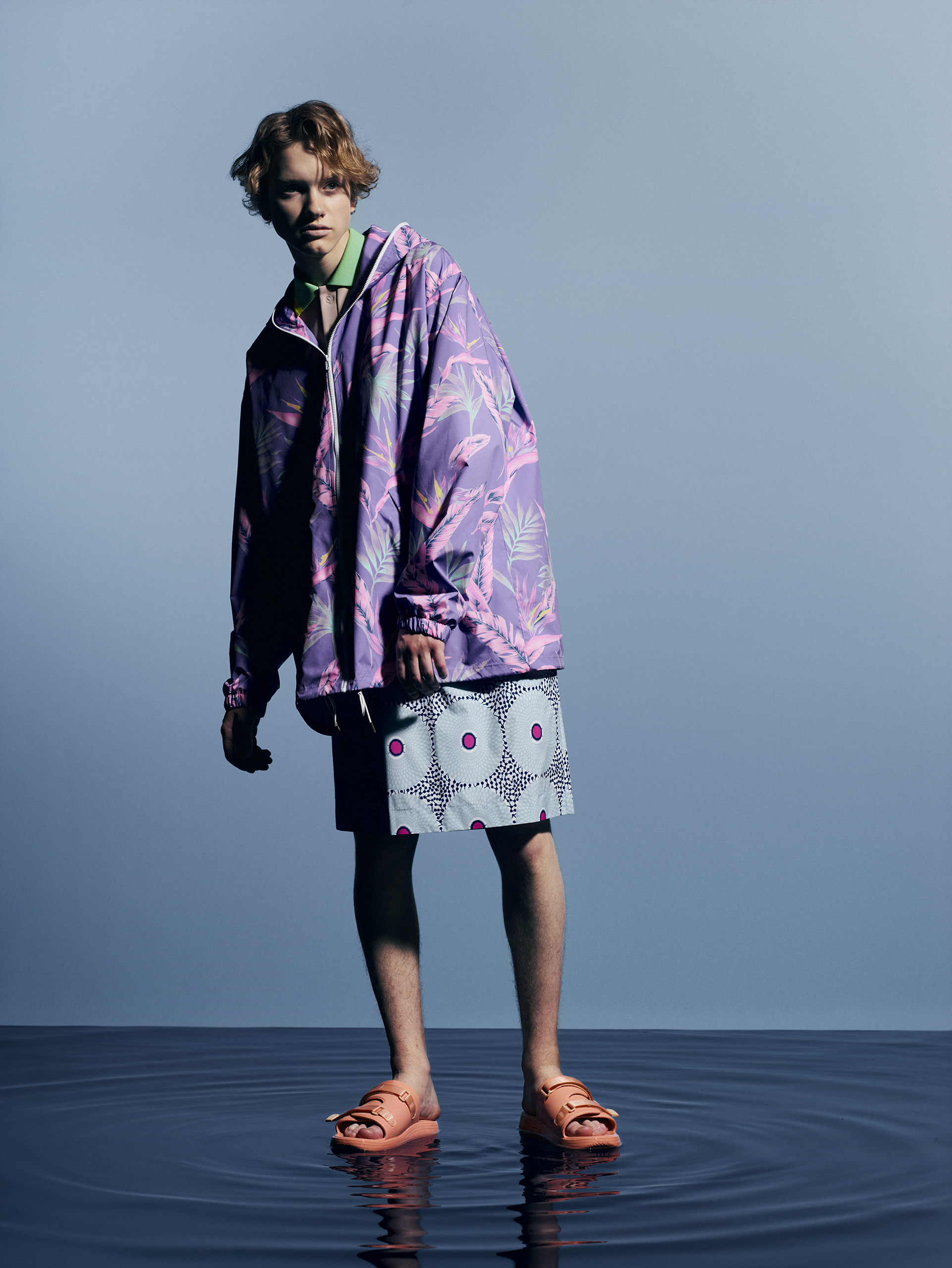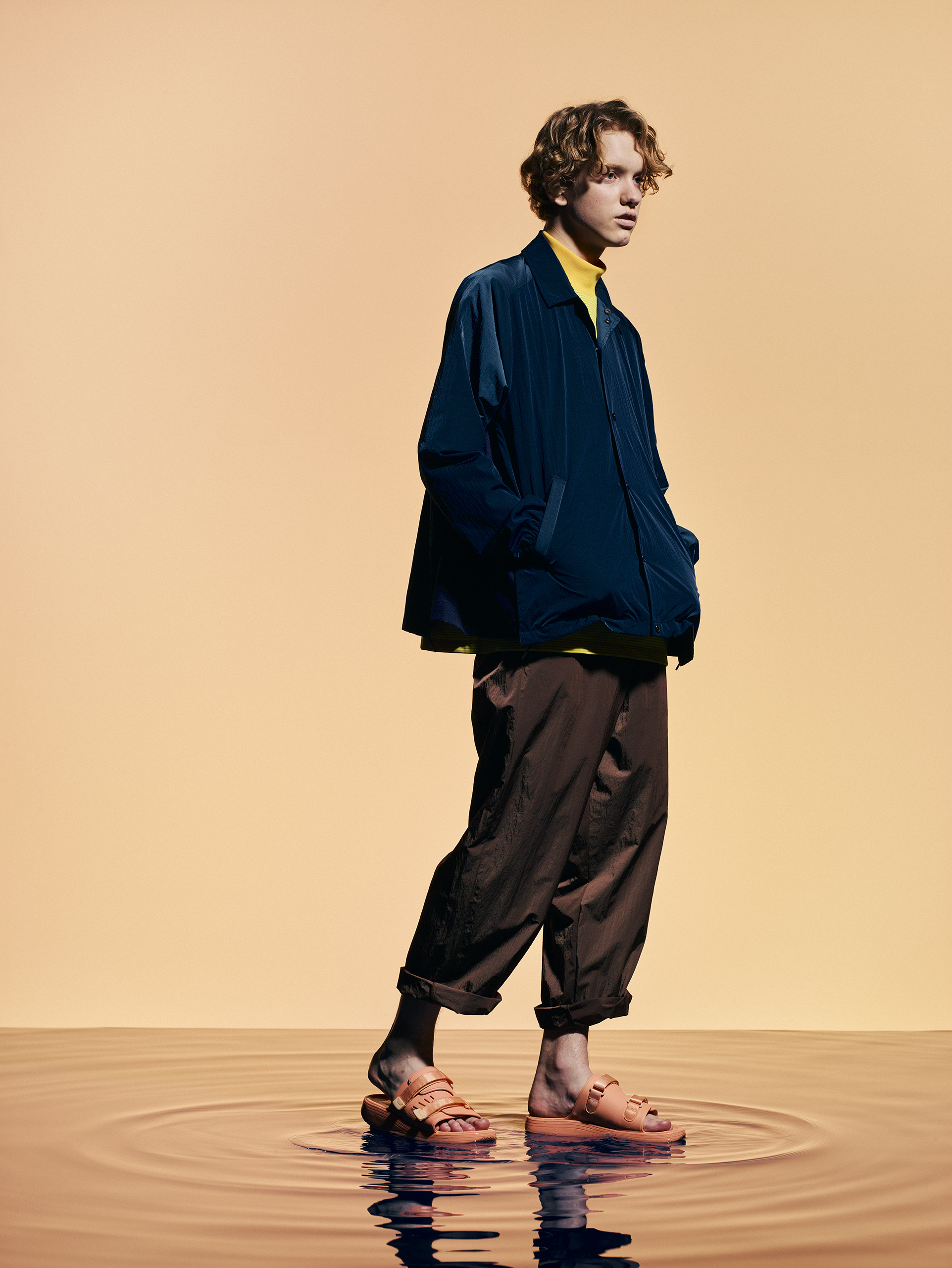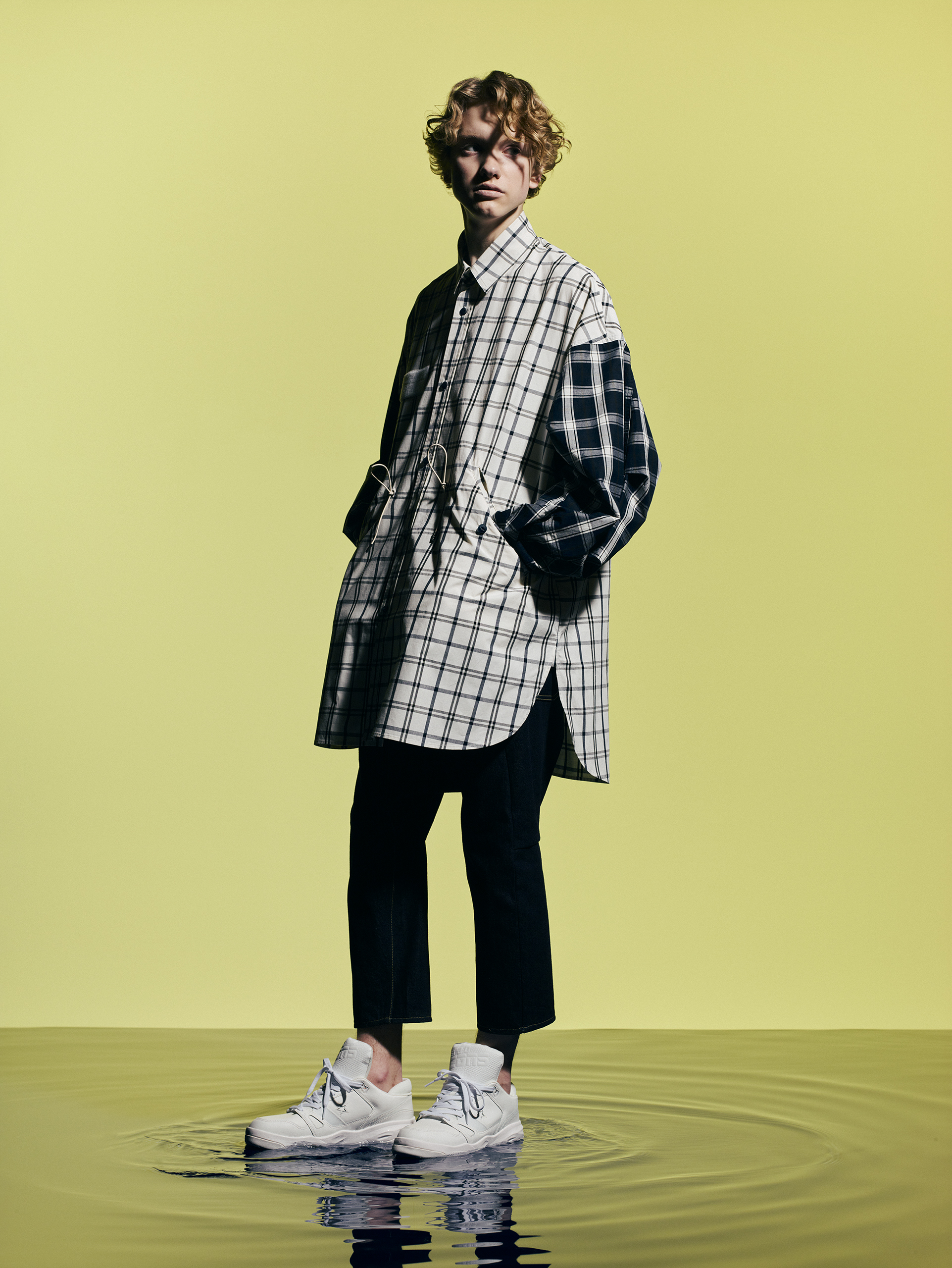For outsiders, fashion can, at times, seem frivolous, superfluous and the antithesis of serious culture and art. This could be considered a fallacy, however, as fashion and clothing both reflect and embody the times and specific periods or trends.
For Fumito Ganryu, fashion is one of the true independent art forms alongside sculpture, architecture, painting and literature. Often, these art forms collaborate and engender new art forms and aesthetics, as seen, for example, in the work of celebrated designer Raf Simons at Dior with leading contemporary artist Sterling Ruby and in the paradigm-shifting work of dancer Michael Clark and Manchester indie heroes The Fall in the performance “I Am Curious, Orange.”
In 2017, Ganryu left iconic Japanese fashion brand Comme des Garçons and established his own eponymous brand, Fumito Ganryu, in 2018. He celebrated his first release at acclaimed menswear arena Pitti Uomo, and his show there cemented him as one of the most inspired modern-day designers. Even before striking out on his own, his bold creations were changing the fundamental definition of menswear. Referring to Ganryu’s label under Comme des Garçons, Gregory Babcock wrote for hip style site Highsnobiety that the label’s “radical embrace of the most common items in our closets helped make it one of the most criminally underrated names in modern menswear.”
I meet Ganryu at his office in Tokyo’s Sendagaya district on a gloomy Friday in April, and we sit down and discuss his career, his collections and his approach to fashion in general. A quiet man, he takes his time to consider each question and only answers when he has formulated his answers. Fascinating, profound and engaging, he is a unique creative and can easily be considered one of the world’s most critical menswear designers.
Freedom to Choose
A practical person and very much a realist, Ganryu is known for restructuring and redesigning everyday clothing. He tells me that the most important word in terms of brand concept is “neutral,” and all of this reminds me very much of Japanese novelist Junichiro Tanizaki, who wrote in his treatise on Japanese aesthetics, In Praise of Shadows, “The quality that we call beauty … must always grow from the realities of life.”
Ganryu moved through the ranks at Comme des Garçons after graduating from the prestigious Bunka Fashion College and worked under Junya Watanabe before being given his own label within the Comme des Garçons group by fashion royalty and label head Rei Kawakubo. “I worked there for around 12 or 13 years,” he says. “The most important thing I learned was professionalism.”
Professionalism, he explains, isn’t simply connected to the quality of clothes or to the completion of presentations. It’s also connected to “the mindset of being a designer working in that environment at Comme des Garçons and a passion for producing and making things. How to bring a passion into everything you do. Even under hard circumstances, no matter if the deadline was approaching, until the last minute, you needed to have a passion to have it completed.”
Gender comes up when discussing Ganryu’s designs, and he continually asserts the importance of freedom of expression.
“I’m very concerned with gender,” he says. “From a young age, I thought about Japanese culture and club culture compared with Europe. I’d sometimes put on my mother’s clothes and go to clubs and try on some outfits. It was normal for me to wear women’s clothes and feel androgynous in terms of style from a man’s perspective. This really resonated with me. And perhaps when talking about Japan, there is a kind of air of androgyny here, and there are different aspects to this that may be unique to Japan. All of this can feed into my designs.”
He continues, “It’s totally fine for there to be clothes designated as women’s and men’s clothes — but also clothing that can be for anyone. That’s really important for me. There should be freedom for everyone to choose.” This can be seen as part of a more general trend as increasing numbers of designers in Japan are approaching gender-neutral clothing.
He remarks that his time working in womenswear at Comme des Garçons left him with a strong affinity for the female form and women’s fashion. “Although I present my collections as menswear, I don’t want it to be limited to that,” he says. “If a woman feels like she wants to wear my clothes, she should feel comfortable doing so without any hesitation.”
Redefining and Redesigning
I’m interested in what keeps Ganryu designing, and as the conversation turns to inspiration and what kind of subjects or themes frame his collections, I remember that he continually collaborates with some of streetwear and casualwear’s biggest names, including Dickies, Converse, Suicoke and Salomon. Reality, everyday clothing that can be worn anywhere and perhaps the redefinition of everyday garments appear to be part of Ganryu’s creative ethos.
“Producing clothes for people to wear and feel comfortable in across many situations is important, but also scenes — music and other scenes — are important for me,” says Ganryu. “That’s where the neutral concept comes from, as I want to produce clothes that can fit into lots of different environments. I don’t want my clothes to stand out too much, but I also don’t want them to be boring.”
Ganryu goes on to explain that he doesn’t have a single process, that he finds inspiration in a variety of things. “I have a lot of different interests, including music and art, but recently, I’m interested in the digital world. I’d like to express these different interests in collections that are able to transcend the clothing itself.”
As Ganryu continues to expand and progress his own brand under his own rules and particular aesthetic vision, he enjoys the playfulness of fashion. He shows me some of his latest collection, which includes a redesign and update of a three-dimensional cutting of a classic navy blazer with zips, a pair of vibrant and patterned shorts that can be used as swimwear and some beautiful knitted cardigans which incorporate a color scheme that seems to change hues depending on the angle from which it is viewed. These designs illustrate his underlying vision of recreating and tweaking everyday garments so that they can be considered fresh and current for a new generation.
Ganryu debuted his collection at Pitti Uomo, continued to participate in Paris Fashion Week and now presents collections digitally. While the runway show is considered the optimal format for directly conveying ideas through fashion, he believes that it is not the most suitable method for the Fumito Ganryu brand. Thus, he wants to experiment with unconventional endeavors in fashion centers such as Paris, New York and London in the future. He seeks to incorporate a more international, genderless approach to aesthetics and perspectives for a new generation and to develop fashion that is free from the constraints of age, gender and location.

